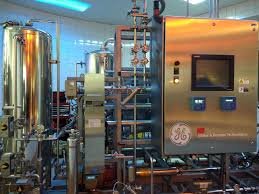Cleaning Validation of Clean-in-Place (CIP) Systems

🧼 Cleaning Validation of CIP Systems in Pharmaceuticals
🔹 What is CIP?
-
Clean-in-Place (CIP) is an automated method for cleaning process equipment (bioreactors, fermenters, tanks, piping, filling lines) without disassembly.
-
Ensures removal of residues (API, excipients, cleaning agents, microbial contaminants) to avoid cross-contamination and meet GMP requirements.
🔹 Regulatory Expectations
-
US FDA, EMA, WHO, PIC/S, ICH Q7 demand validated cleaning processes.
-
Demonstrates that equipment is consistently cleaned to predefined acceptance limits.
-
Part of QMS and critical for regulatory inspections.
🔹 Steps in Cleaning Validation of CIP Systems
-
Risk Assessment & Planning
-
Identify equipment, products, cleaning agents.
-
Assess hard-to-clean areas (dead legs, spray balls, gaskets).
-
Establish worst-case product (hardest to clean, highest potency/solubility risk).
-
-
Define Acceptance Criteria
-
Based on Maximum Allowable Carryover (MACO), safety-based limits, 10 ppm approach, or visual cleanliness.
-
Consider Toxicological Evaluation (PDE/ADE values).
-
-
Develop & Qualify CIP Cycle
-
Parameters: flow rate, temperature, contact time, detergent concentration.
-
Ensure reproducibility and effectiveness.
-
-
Sampling & Testing Methods
-
Swab sampling – for direct surface analysis.
-
Rinse sampling – for areas not accessible to swabs.
-
Visual inspection – as supplementary check.
-
Analytical methods: HPLC, TOC, conductivity, specific assays.
-
-
Validation Protocol Execution
-
Perform 3 consecutive successful cleaning runs.
-
Cover different scenarios (product changeover, campaign cleaning, dirty hold time).
-
-
Documentation & Reports
-
Protocol approval (QA).
-
Raw data, lab results, deviations.
-
Final cleaning validation report with conclusions.
-
-
Lifecycle Approach
-
Periodic review/revalidation.
-
Continuous monitoring of CIP system performance.
-
Integration with Change Control & CAPA system.
-
✅ Benefits of CIP Cleaning Validation
-
Ensures patient safety (no cross-contamination).
-
Enhances regulatory compliance.
-
Reduces manual cleaning errors.
-
Increases efficiency & reproducibility.
-
Builds confidence during FDA/EMA audits.
🎓 Discover one of the best Complete Pharmaceutical Production Course available —click below to explore the course that’s shaping future Production Course skills.
https://trcjw.on-app.in/app/oc/338669/trcjw

